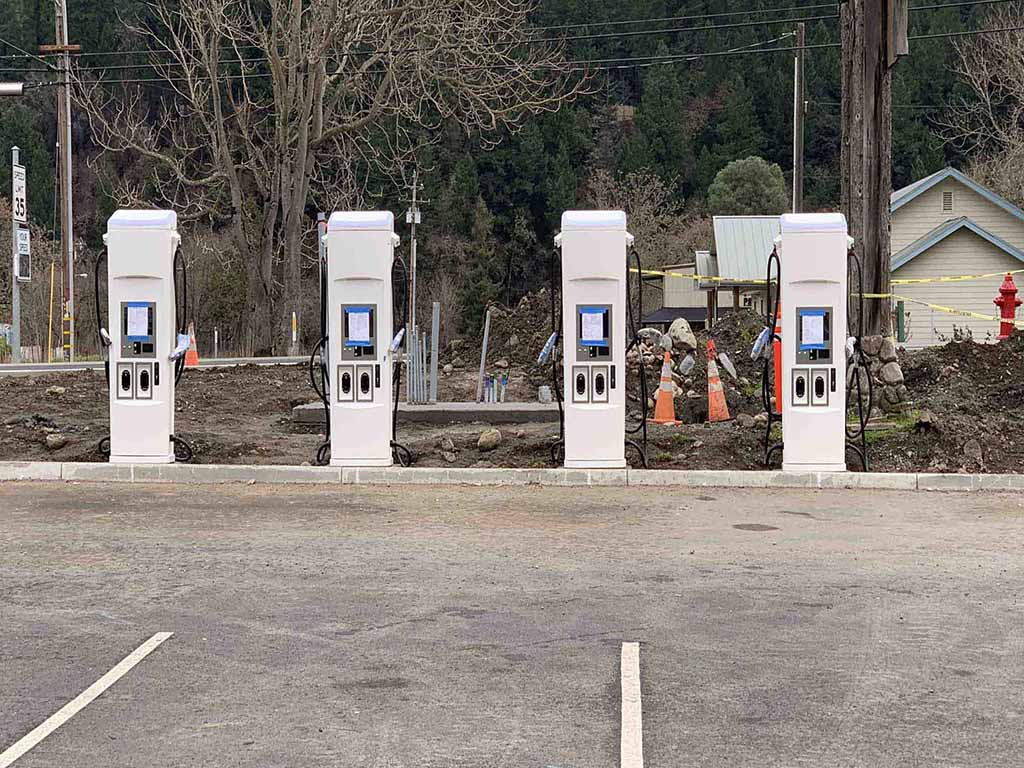
The fight against L.A.’s bad air
It’s no secret that the conversation surrounding the positive effects of mass electric vehicle adoption primarily revolves around reducing environmental impacts relating to the climate. However, the state of California’s very public attempt to combat climate change, while a definitive net positive, eschews a supplementary effect of mass EV adoption: the beneficial health effects citizens in certain parts of the state will experience as a direct result of lowered emissions. While this facet is certainly part of the conversation overall, it’s not often that air quality data makes headlines apart from when it generates negative attention. So, let’s get into some of the encouraging data trends already beginning to emerge as more and more of the light-duty fleet converts to electric and air quality in the region slowly, but surely, makes its way to acceptable and healthy levels.
A recent study found California to be the least healthy state in the nation for air pollution, coming in last when comparing concentrations of particulate matter. The vast majority of un-healthy air in the state is located in the densely populated southern California― SoCal― area, although wildfires in other parts of the state also contribute to lowered air quality. The megacity of Los Angeles has long been touted as the greatest offender, with the city not “currently meet[ing] the U.S. EPA’s air quality standards for both PM2.5 and ozone.” PM2.5 denotes “particulate matter measuring up to 2.5 microns in size, and is widely regarded as one of the most harmful pollutants to human health for its prevalence at dangerous levels.” According to the same source, health effects of LA’s air quality is readily apparent: the County of Los Angeles Health Department reports that 1 in 10 children residing in the area have been diagnosed with asthma while overall cancer risk for all residents is “increased by 900 for every million, according to the South Coast Air Quality Management District.” The American Lung Association, which creates a ‘State of the Air’ report every year, found the Los Angeles-Long Beach metropolitan area to be among the worst metropolitan areas for number of high ozone days, 24-hour particle pollution, and annual particle pollution.
These results make sense when we consider common pollution sources and their prevalence in different areas. The Port of Los Angeles and the Port of Long Beach are the top 1 and 2 busiest shipping ports in the United States, respectively. Paired with smoke from wildfires as well as emissions from industrial plants, there is a myriad of reasons why the air quality in the region suffers. However, Southern California also has a strong car culture, with nearly all daily commutes taking place via internal combustion engine vehicles (ICEVs) in heavy traffic congestion which emit large amounts of carbon into the atmosphere. Shipping, wildfires, and industrial plants are difficult to reduce en masse― but vehicle emissions are where state legislators recognize the easiest gains in air quality, and perhaps even the most impactful. Despite having some of the most stringent vehicle emission standards in the country, the sheer number of ICEVs on the road contributes nearly 33% of greenhouse gases in Los Angeles County. These numbers paint a bleak picture: with little in the way of mass transit infrastructure, citizens are reliant on vehicles that threaten their long-term health.
Fortunately, California’s combination of strict vehicle emission standards paired with a push for adoption of EVs means that these numbers are steadily improving. When we look at data collected during the 2020 COVID-19 lockdown in the area, we can easily see the effects of reduced ICEV emissions: March 2020 saw “a long stretch of World Health Organization-target air quality… the longest streak [for Los Angeles] since 1995.” The commonly accepted explanation for this drastic improvement is “likely the result of lockdown measures… during which non-essential businesses were ordered to close and residents were urged to stay home.” This data proves that poor air quality in L.A., although due to a combination of factors, is at the very least highly impacted by light-duty transportation by residents. Year-over-year trends have seen a 10.6% reduction in L.A. air pollution from 2017 to 2018 and another 11.8% from 2018 to 2019. While these downtrends are likely due to a number of policies aimed to curb emissions in all polluting sectors, EVs are also substantially credited with the significant percentage changes: “motor vehicles represent the leading source of city-wide PM2.5 and nitrogen dioxide, an ozone precursor.” Thus, the shift to electric is perhaps one of the easiest steps California, and by extension its residents, can take to improve both the health of the air and of their bodies. EVs aren’t just about saving the environment― they’re also about saving lives. The negative health impacts of polluted air are well-known and reflected in the data. The ability of EVs to mitigate these effects are also reflected in the data― so if you needed yet another reason to consider an EV as your next vehicle, just think about the health of yourself and your fellow citizens.
